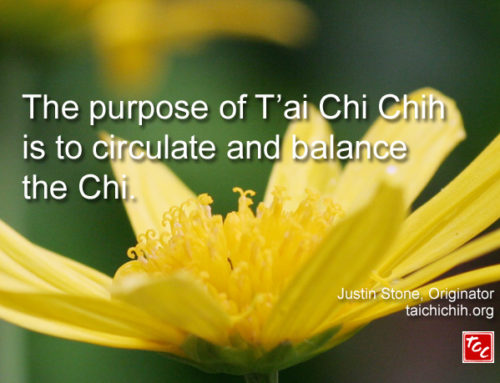The Importance of “TEH”
I have stayed with Yogis, in the Himalayan Foothills, who are masters of Prana, the Sanskrit word of CHI. They seem to be impervious to the cold and hunger. Since we ate only once a day, about ten-thirty in the morning (which was not enough for me), one would expect an eagerness to get to meals. However, such was not the case. One time I asked my friend, Mararaj, why he was not at the meal that morning. He replied that he had been meditating.
“When will you eat?” I asked.
“Oh, tomorrow morning, if I’m not in meditation then,” he casually replied.
Most of the Yogis bathed in the narrow section of the upper Ganges at about four-thirty a.m., when many other animals were also there. Things went smoothly unless the roar of a tiger was heard, at which the animals scattered and a few monkeys fainted. I have seen the Yogis leave the water, ice-cold at that hour, and not even bother to dry themselves, relying on their inner heat to keep them warm. One newly-arrived Yogi, who had been a lawyer in Bombay before renouncing, tried to do this and became seriously ill; he wasn’t ready.
This mastery of Prana and the development of the “Dumo Heat” are the basis of Tibetan Yoga. Some Yogis, deep in Kundalini practice, meditate in water to stay cool while developing this terrific internal warmth. (There is a picture of such a Yogi in one of my books.) I spent two years in developing this internal heat, and the first success was just like turning on a faucet. The overwhelming energy made sleep impossible, but it did not seem to matter. Unfortunately, I was doing this without a teacher and there were some bad side effects, such as internal bleeding. This is all described in my book Meditation for Healing, with instructions. I would not advise one to practice without instruction. We have all read how an advanced Tibetan Yogi can melt the snow for many feet around him, just using this inner heat, and I know of a Zen Master in Japan who used to stand under an ice-cold waterfall at midnight, in the dead of winter, to test his discipline and practice keeping the concentration in the T’an T’ien. Neophytes who have tried this have invariably fallen ill.
I mention all this because the circulation of the CHI, and the balancing of the YIN and YANG, are the primary goals of T’ai Chi Ch’uan and T’ai Chi Chih. To just think of these disciplines as exercise is to place them in the same category as aerobics, jazzercise, and so on. Wen Shan Huang spoke of Chi a Priori and Chi a Posteriori, that is, the Chi with which we came into this life and that we accumulated (and stored) during the lifetime.
This is not “our” Chi; we are a product of this Chi. In Chinese Cosmology, from the ineffable TAO comes the Yin Chi and the Yang Chi (the beginning of dualism). This is before there is a Heaven, an Earth, or Man. They are products of the Yin and Yang Chi. To unite with this Chi and to balance it is to return to the “Uncarved Block”, and this is what is meant by “Centering.” In this sense, T’ai Chi practice becomes meditation.
The ancients have stated that the technique of the form is the least important item, yet we continually hear emphasis only on the outer physical aspects. Contests in combat and tournaments only strengthen this emphasis. How can you look inside the practitioner and see his accordance with Reality? Just as there are Hatha Yogis in India who do incredible things with their bodies, without a shred of spiritual progress, so can emphasis only on the outer keep the student from real fulfillment. Real adepts well understand the relationship between the Mind and Chi. For each state of mind, there is a corresponding character of Chi, and, in turn, each aspect of Chi influences the state of mind. If one will study the Buddha’s great “Sattipathana” meditation, or the Yasenkanna of Japanese Zen Master Hakuin, one will see how the Chi, the State of Mind, and Spiritual mastery are
tied together.
It is my hope that T’ai Chi Chih instruction will not just be physical. “T’ai Chi Chih” teachers are told that the important thing is “TEH”, the power of inner sincerity and integrity.
Reprinted with permission from The Vital Force, April, 1990
(From T’ai Chi, Warfarer Publication, February 1990)




